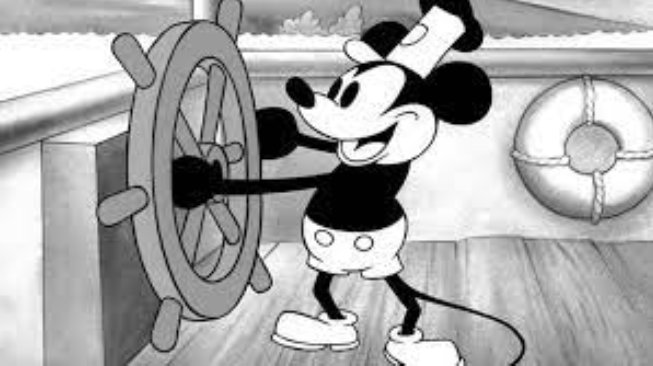This year, the magic of Mickey Mouse is released to the public domain, meaning that the icon is no longer protected under intellectual property laws and therefore free for artists, directors, and other creatives to use. What this means for the classic character is up in the air, but many are speculating that it’s a future filled with not-so-child-like wonder.
The term “public domain” refers to works that are not protected by copyright, patent, or other intellectual property laws. Thus, it is no longer a sole entity who owns the work, but the public. A work may be considered public domain for a number of reasons, but most commonly because its copyright expired. As of Jan. 1, all materials with authorized publication dates before 1929 are released, including the world’s most famous mouse.
To be more specific, it is Mickey’s earliest version from the 1928 cartoon Steamboat Willie that is now officially a part of the public domain.
Still, there are limitations in using the character. Because “Steamboat Willie” is the only depiction of Mickey (and Minnie) that is currently in the public domain, all renderings of him from later years, such as those from “Fantasia” and the “Mickey Mouse Clubhouse” series, remain under copyright protection. This means that one likely cannot use Mickey’s hallmark primary color palette or white gloves-which appeared in later renditions of him-without breaching copyright laws.
Additionally, while “Steamboat Willie” is no longer under copyright protection, it is still trademarked by Disney, meaning that one cannot reproduce the character onto a product masquerading as one from Disney.
“Trademark law is all about preventing consumer confusion—and not about getting in the way of creativity—so it depends on whether people are likely to be misled about the source of your cartoon,” Jennifer Jenkins, director of the Duke Center for the Study of the Public Domain, wrote in a blog post. “As long as no one thinks it is a Disney joint, there should not be a trademark problem.”
Anticipating the release of Mickey to public domain, some fans were weary about what may lie in store for the character. Works such as 2023’s “Winnie-The-Pooh: Blood and Honey,” in which the beloved children’s characters of The Hundred Acre Wood became the antagonists of a horror film, point to a less-than-G-rated future.
“Because Mickey is the pinnacle of children’s media, the obvious edgy twist on the character is to go bloody or sexy,” A.V. Club writer Mary Kate Carr wrote. “It doesn’t take a lot of imagination or ingenuity to put a knife in the hands of a beloved kid’s character.”
Adult Swim has already led the charge in changing the character’s squeaky clean persona by creating a bumper depicting Mickey in a NSFW manner. A multitude of memes from the internet’s opportunistic jokesters followed suit.
“It’s intriguing to consider just how this situation might continue to pan out as time goes on,” CinemaBlend writer Mick Joest said. “What can be said right now, though, is that we won’t be viewing any of these “alternative” creative endeavors with a Disney+ subscription.”




